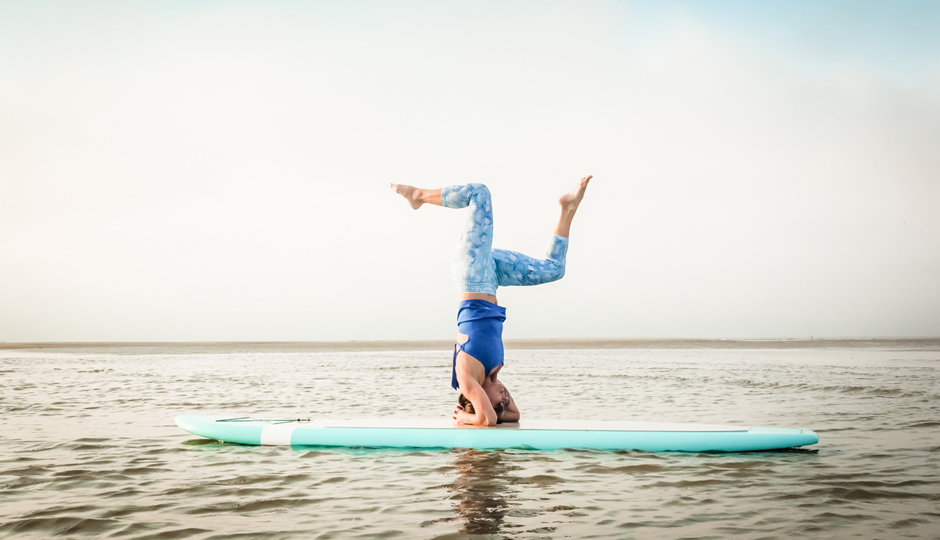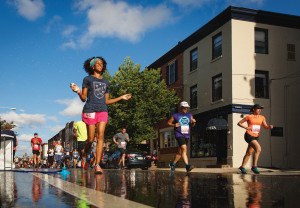Balancing Act: The Case for Adding Stability Training to Your Workouts
Great balance may seem like something you shouldn’t worry about until you’re scoring early-bird dinner deals, but it’s never too soon to start training. It’ll come in handy when you trip over the dog while carrying two handfuls of grocery bags, but that’s not all. Slowly losing your balance and coordination is normal as you get older, and perfecting your balance as you move through life means that, by the time your muscle mass begins to decrease and your bones begin to weaken, you’ll have a solid base you only need to maintain.
You’d think that staying upright would be a simple act to pull off, but, in reality, it takes teamwork from three major systems: the visual, the auditory (inner ear), and proprioception, our inner sense of limb position and movement in space, which is reliant on specialized neurons found in muscles and joints. Take one away (by closing your eyes or standing on an unstable surface) and balancing becomes harder — but that’s how you get better at it.
Here’s a little test to check your balance:
- Stand still with your feet lined up. Got it? Your balance is okay.
- Now raise one foot so that it hovers a few inches off the floor and hold for 10 seconds. Check? Your balance is normal.
- Continue standing on one leg and close your eyes.
Did you wobble slightly or touch your foot to the floor? Most of us do. If you didn’t, you’re slaying the balance game. If you needed support, like a chair or a wall to balance, or if you couldn’t maintain the pose, even with support, then your balance could be “off” because of illness, injury, poor posture, muscle imbalances, or a weak core.
Balance and stability training isn’t new — physical therapists, personal trainers, and athletic trainers have been using these techniques for decades. But increasingly, more people are adding a wobble to their workout to move their way towards a stronger core, and with good reason (added bonus: it tones and strengthens your lower body, too).
We’ve all heard of the almighty strong core, a symbol of vitality, strength, fitness and health. But what is the core? The core is a three-dimensional space that consists of a set of muscles that surround your trunk and include your diaphragm, your abdominal and oblique muscles, your paraspinal and gluteal muscles, and your pelvic floor and hip girdle. These muscles produce a corset-like stabilization effect on the trunk and spine, supporting and strengthening. When these muscles are weak, you’re much more likely to suffer from chronic back pain, lose your balance and fall, or be more prone to injury when working out.
Another benefit of stability training is whole-body strengthening and rebalancing. We all have a dominant side, whether it be our left or our right, where our muscles are stronger and more balanced. Movement on an unstable surface forces you to press into the weaker side to achieve balance and stability, allowing you the opportunity to strengthen equally through both sides and achieve a whole-body equilibrium. On land, we can overcompensate for that imbalance, but on a balance aid — like a Bosu ball, for instance — your body adjusts intuitively.
Besides the core stabilization and whole body strengthening and rebalancing, there is another little-known upside to allowing your body to readjust itself through stability training. On land, we often overextend ourselves, pushing our bodies past their limit through no fault of our own. We simply don’t realize how far we can go before our alignment is compromised. Balance aids, such as the Bosu ball or working out on a floating mat, a popular new trend (you can catch my studio Aqua Vida teaching floating SUP yoga classes or floating HIIT workout on the water at Spruce Street Harbor Park all summer long), require a collaborative effort of major muscle groups, plus the support of secondary muscle groups. This allows you to see just how far you can go before you topple over, and keeps you within a safe zone that protects the integrity of your muscles and joints.
Popular in the studio or in the gym, exercises like lunges, squats, planks, crunches, v-sits, mountain climbers, and standing exercises for the upper body, are great for developing balance and stability, with the added bonus of improving posture.
Introduce instability, like balancing on a floating mat, and you’ll be surprised at the increased effectiveness of the movement. You get more bang for your buck, help to prevent injury, give your body a much needed overhaul, and your workouts become more engaging and fun, leading to a much more efficient way of working out and allowing you access to a powerful form of alignment that will serve you well into your BINGO days.
………………
Jana Mars is the creator and founder of Aqua Vida, a local floating fitness studio. You can find out more about Aqua Vida and how you can take a class with them here.
Like what you’re reading? Stay in touch with Be Well Philly—here’s how:
- Like Be Well Philly on Facebook
- Follow Be Well Philly on Twitter
- Follow Be Well Philly on Instagram
- Follow Be Well Philly on Pinterest
- Get the Be Well Philly Newsletter



